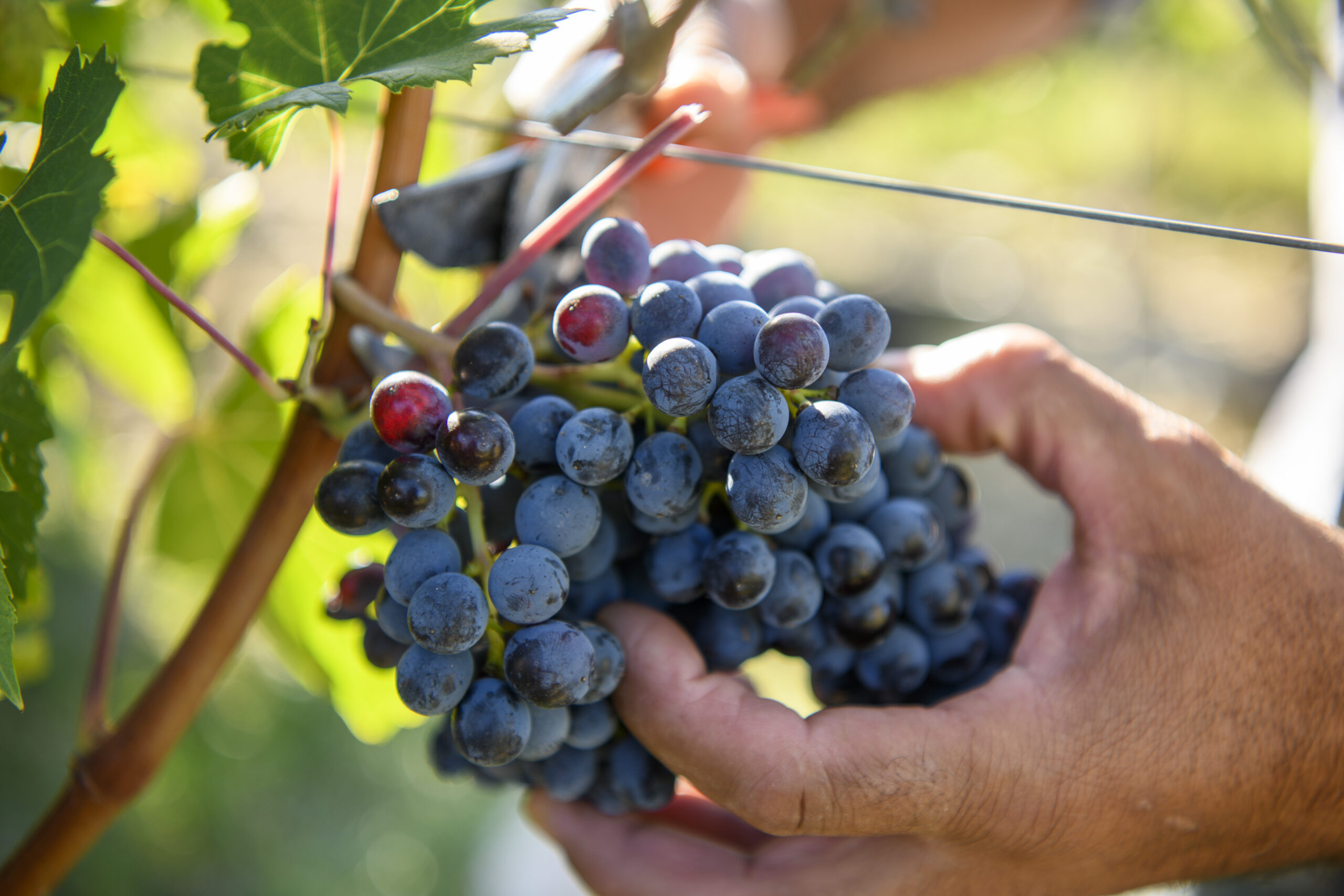Everything you need to know about traditional and modern grape harvesting. Find out what the phases of the grape harvest are at Castello Banfi.
Grape harvest: everything you need to know
In the elaborate process that transforms the grapes into fine wines, the grape harvest represents the most fascinating and evocative moment: for centuries, the harvesting of wine grapes was one of the events that marked the passing of the year and the seasons, and still today it represents a unique experience to be lived in person.
The word 'harvest' applies specifically to the picking of grapes for wine production and, through the skilful blending of ancient traditions and modern technology, is the first step that leads to the production of fine wines such as Banfi.
Knowing how the grape harvest is done, who does the harvesting and what the secrets are for recognising the best grapes allows one to appreciate the value and prestige of labels of excellence.
When do you harvest?
The timing of the harvest is linked to the characteristics of the grape variety and the weather. The degree of ripeness of the grapes is strongly influenced by the properties of the soil, exposure to the sun and climatic conditions.
The timing of the harvest therefore varies from year to year: in Italy, and in Tuscany in particular, harvesting traditionally takes place between September and October, although in recent years harvests are increasingly early, thus starting as early as the end of August.
The best times to harvest grapes at the right ripeness for wine production are the coolest times of the day, preferably early in the morning. Excessive heat, in fact, can lead to fermentation of the grapes in the baskets, thus spoiling the fruit.
Harvesting: manual harvesting and mechanical harvesting
Grapes can be harvested in two different ways:
- manual harvesting,
- mechanical harvesting.
The first method employs dozens of experienced operators (winegrowers) who select one by one the bunches of grapes to be used for the production of wine; the second, on the other hand, involves the use of grape harvesting machines that gently shake the vines by dropping the grapes into special containers.
It is clear that this second harvesting method is quicker and cheaper, but does not guarantee perfect grape quality. In fact, only with careful selection is it possible to choose the best grapes, from which to obtain a wine of excellence.
How is manual harvesting done? Using special scissors, the ripe bunches are removed from the plant, which are then stripped of their leaves and placed in specific containers, taking great care not to press or damage the grapes.
What are the phases of the grape harvest
On the Banfi estates, where Castello Banfi is located, the phases of the grape harvest are marked with the care and attention to detail that have always distinguished our company.
Collection
It all begins in the vineyards, between the neat and lush rows. The first phase of the harvest is the picking of the ripe bunches, entrusted to the experience and in-depth knowledge of the grapes of Banfi's winegrowers, who devote scrupulous care to the manual selection of the best bunches. Only bunches that are free of defects and at the right point in their ripening process are selected for vinification, and then picked and placed in the vats.
Pressing
The second phase of the grape harvest, the crushing, represented in the not too distant past a moment of gathering and a true collective feast. During the ancient grape harvest, the population, including children, would gather in the fields and, barefoot, dedicate themselves to crushing the grapes in large wooden vats.
Nowadays, the crushing phase is entrusted to special agricultural machines and stalk crushers that crush the grapes and press the grains, after removing the stems.
Some wineries and wine resorts such as Castello Banfi, deeply rooted in their territory and traditions, offer visitors the opportunity to visit the cellars and enjoy the activities taking place in the vineyard during harvest time.
Fermentation, re-fermentation and ageing
The last stages of the harvest and wine production have must and technological innovation as protagonists.
Alcoholic fermentation, which begins immediately after pressing, lasts an average of seven to ten days and takes place in temperature-controlled barrels made of specific materials that preserve the integrity and richness of the grapes as much as possible.
Finally, the wine is left to age in environments with specific temperatures and humidity levels, and only when it reaches the result desired by the team of oenologists is it bottled and, after a period of rest in the bottle, placed on the market.

